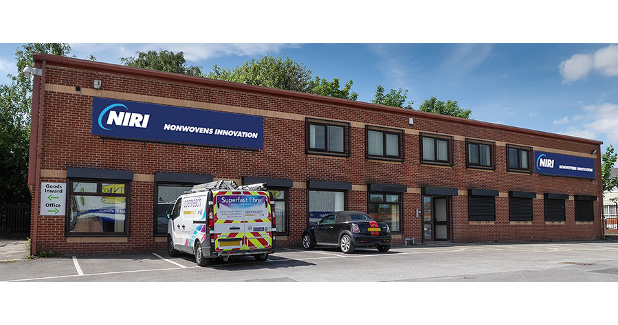
NIRI invests more for innovation drive
With over 450 projects completed for more than 200 clients, the Nonwovens Innovation & Research Institute (NIRI), located in West Yorkshire, UK has invested significantly in a range of new equipment
With over 450 projects completed for more than 200 clients, the Nonwovens Innovation & Research Institute (NIRI), located in West Yorkshire, UK has invested significantly in a range of new equipment, made possible by the Institute’s move from the University of Leeds campus to a new facility, and giving NIRI even greater scope to help companies develop better-performing products.
Using Technology Readiness Levels (TRLs) to demonstrate the innovation process, each project undertaken by NIRI – whether consultancy for commercial clients or co-funded joint ventures – is evaluated against the parameters for each technology level and then assigned a TRL rating based on the project’s progress. NIRI’s expertise is evidenced in the Institute’s focus on the ‘valley of death’ stage, the point of no return from which many novel technologies fail to progress, and the point at which the Institute’s expertise can be seen – working out how to develop proof-of-concepts and prototypes into commercially-viable products. The investment in new facilities includes a range of equipment (detailed below) all of which are already helping NIRI’s clients through the increased ability to develop, manufacture and test new products.
Purchase of an Inovenso NE300 electrospinner responds to the increasing use of nanofibers across a whole range of sectors. A laboratory scale electrospinning unit, able to produce uniform nanofibrous structures at an area of up to ~24x37cm, the electrospinner is designed to be compatible with a broad range of polymers, PA, PET, PVA and PU, and various solvent systems. The equipment applied voltage can be altered from 0–40kV, with the capability to alter the distance-to-collector from 3.5-23.5cm. The unit works on a closed volumetric feed system to minimise solvent evaporation and is capable of utilising 1-9 of its nozzles. This allows small-scale investigation and parameter optimisation, before scaling to larger sample sizes. Structures can be collected on a static collector or onto a rotating drum that is capable of 80–2,000 RPM with the ability to align fibres, and the system allows for fibre diameters lower than 100nm.
A new Perfojet flatbed hydro-entanglement pilot line can work with widths ~35cm. The flexibility of this pilot line allows 1-3 injectors to be utilised with a varying hydro-entanglement pressure of 20-180 Bars, at belt speeds of 0-22m/min. With various jet strip diameters available to NIRI, from 90-140 µm, key hydro-entanglement processing parameters’ adjustment allows the degree of entanglement to be tailored to specified requirements.



